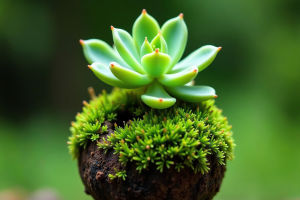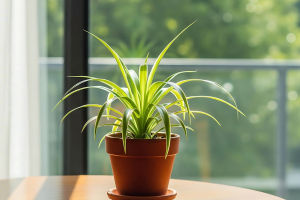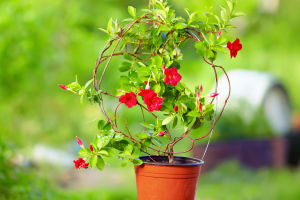Plants Clean Air
We spend a large portion of our lives indoors—at home, in offices, or in other enclosed spaces. Yet, indoor air isn't always as fresh as we'd like it to be.
Common pollutants such as formaldehyde, benzene, and volatile organic compounds (VOCs) can accumulate from furniture, cleaning products, paints, and even electronics. Over time, breathing in these substances may impact our health.
So, what can we do? One simple and natural solution is to bring in air-purifying plants. Today, we'll explore which plants are best at improving indoor air quality and how we can use them to create healthier spaces for ourselves and our loved ones.
Do Plants Really Purify Air?
The idea that plants can clean the air gained attention after a famous NASA study in the late 1980s. Researchers found that certain plants could remove harmful chemicals from sealed environments—an exciting discovery for improving air quality on space stations.
While the effect of plants in open indoor spaces is more subtle than in sealed chambers, more recent research suggests they can still contribute meaningfully to air quality, especially when combined with proper ventilation.
Dr. Fraser Torpy, an environmental scientist at the University of Technology Sydney, states: "Indoor plants can help reduce certain pollutants and improve air freshness, especially when used in numbers."
Top Air-Purifying Plants to Try
Ready to green up your space? Here are some of the best plants for helping to clean indoor air, based on both research and real-world experience:
Spider Plant (Chlorophytum comosum)
Spider plants are hardy, easy to care for, and highly effective at removing pollutants like formaldehyde and carbon monoxide. They also release oxygen and can thrive in a variety of lighting conditions—perfect for beginners.
Peace Lily (Spathiphyllum)
Known for its beautiful white flowers, the peace lily is a powerful air purifier. It can help reduce levels of benzene, formaldehyde, and VOCs from household products. Keep in mind it prefers moderate to low light and regular watering.
Snake Plant (Sansevieria trifasciata)
Also called mother-in-law's tongue, the snake plant is nearly indestructible and ideal for bedrooms. It releases oxygen at night and helps remove toxins such as formaldehyde and xylene. Plus, it's a stylish addition to modern interiors.
Areca Palm (Dypsis lutescens)
A popular choice for adding a tropical touch, the areca palm is effective at humidifying the air and reducing pollutants. It needs bright, indirect light and consistent watering to stay healthy and vibrant.
Boston Fern (Nephrolepis exaltata)
Boston ferns are excellent at filtering air and increasing humidity—great for combating dry indoor environments. They do best in cool spaces with high humidity and indirect light.
Rubber Plant (Ficus elastica)
The rubber plant is both decorative and practical. Its large leaves help absorb airborne chemicals while adding a bold green element to your decor. It prefers bright, indirect light and occasional watering.
Tips for Maximizing Air Purification
While adding a single plant won't transform your indoor air overnight, a group of well-chosen plants can make a real difference. Here's how to get the most benefit:
Use multiple plants. Aim for at least one medium-sized plant per 100 square feet of space.
Choose a variety of species. Different plants target different pollutants.
Keep plants healthy and dust-free. Regularly wipe leaves to ensure they can "breathe" effectively.
Combine with good ventilation. Plants work best when air circulation is also optimized.
Expert Insights
According to a review published in the Journal of Exposure Science & Environmental Epidemiology, while plants alone may not completely replace mechanical ventilation, they can contribute to better air quality and psychological well-being.
Dr. Torpy adds: "In addition to purifying air, indoor plants can reduce stress and improve mood—a double benefit for our homes and workplaces."
Let's Create Healthier Spaces!
Bringing nature indoors isn't just about aesthetics—it's about fostering well-being. By choosing the right plants and caring for them properly, we can enjoy fresher air and a more calming environment.
Next time you visit a garden center, why not pick out a new air-purifying plant to add to your home or office? And if you already have a green corner, we'd love to hear which plants you've found most helpful. Let's keep growing healthier spaces together! 🌿✨🏡
-
 Succulent Care TipsEasy and Practical Ways to Grow Beautiful Succulents at Home While Minimizing Maintenance Effort!
Succulent Care TipsEasy and Practical Ways to Grow Beautiful Succulents at Home While Minimizing Maintenance Effort! -
 Indoor Air BoostDiscover How Indoor Plants Purify Air and Which Varieties Best Improve Your Home Environment!
Indoor Air BoostDiscover How Indoor Plants Purify Air and Which Varieties Best Improve Your Home Environment! -
 Vine Power MovesDiscover How Climbing Plants Use Strength and Smart Strategies to Scale Their Environment and Thrive!
Vine Power MovesDiscover How Climbing Plants Use Strength and Smart Strategies to Scale Their Environment and Thrive!
Contact to : xyjph123@gmail.com
Privacy Agreement
Copyright © boyuanhulian 2020 - 2022. All Right Reserved.
Privacy Agreement
Copyright © boyuanhulian 2020 - 2022. All Right Reserved.